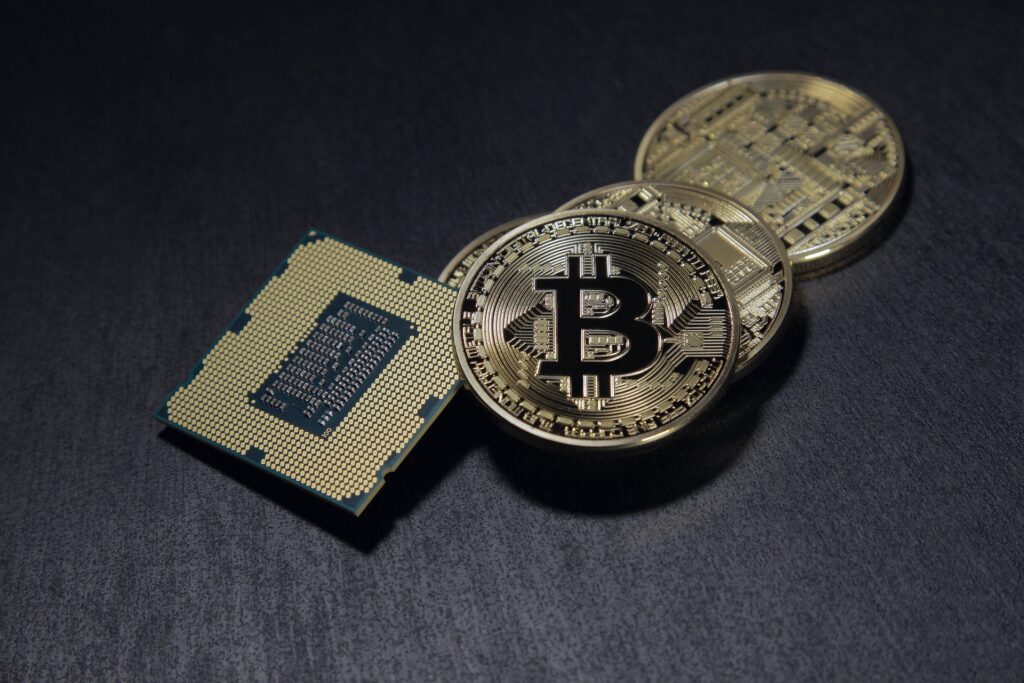A stablecoin is a type of cryptocurrency that is pegged to a specific asset, such as a fiat currency or commodity. The goal of a stablecoin is to maintain a stable value, typically close to the value of the asset it is pegged to. This makes stablecoins appealing as a medium of exchange and store of value, as they are less prone to price fluctuations than other cryptocurrencies.
There are several different types of stablecoins, including:
- Fiat-collateralized stablecoins: These stablecoins are backed by a traditional fiat currency, such as the US dollar. The issuer of the stablecoin holds a corresponding amount of the fiat currency in reserve, and the stablecoin can be redeemed for the underlying asset at any time.
- Commodity-collateralized stablecoins: These stablecoins are backed by a physical commodity, such as gold or silver. The issuer holds the physical commodity in reserve, and the stablecoin can be redeemed for the underlying asset.
- Cryptocurrency-collateralized stablecoins: These stablecoins are backed by another cryptocurrency, such as bitcoin. The issuer holds the underlying cryptocurrency in reserve, and the stablecoin can be redeemed for the underlying asset.
- Algorithmic stablecoins: These stablecoins use algorithms and smart contracts to maintain their value, rather than being backed by a specific asset. The value of the stablecoin is determined by the supply and demand of the market.

PROS AND CONS OF A STABLECOIN
Stablecoins have several potential benefits and drawbacks to consider. Here are some pros and cons of stablecoins:
Pros:
- Stable value: The main advantage of stablecoins is their stability. Because they are pegged to a specific asset, their value is relatively stable and not subject to the same level of price fluctuations as other cryptocurrencies.
- Flexibility: Stablecoins can be used as a medium of exchange or a store of value, depending on the needs of the user. They can also be easily converted into other currencies or assets, making them highly liquid.
- Lower volatility: Because stablecoins are designed to maintain a stable value, they are generally less volatile than other cryptocurrencies. This can make them more appealing for use in commerce and financial transactions.
- Ease of use: Stablecoins are easy to use and understand, as they are pegged to familiar assets such as fiat currencies. This can make them more accessible to a wider audience.
Cons:
- Centralization: Many stablecoins are issued by centralized entities, which means that they are subject to the same regulatory and legal risks as traditional financial institutions. This can be a concern for those who value the decentralized nature of cryptocurrency.
- Counterparty risk: If a stablecoin is backed by a traditional asset, such as a fiat currency, there is a risk that the issuer will default on their obligation to redeem the stablecoin for the underlying asset. This risk is known as counterparty risk.
- Limited adoption: Stablecoins have not yet achieved widespread adoption, which can limit their utility and make it difficult to find merchants or individuals who are willing to accept them.
- Lack of transparency: Some stablecoin issuers may not be fully transparent about their operations or the assets they hold to back the stablecoins, which can create uncertainty and mistrust among users.

WHAT IS THE FUTURE OF STABLECOINS?
It is difficult to predict the exact future of stablecoins, as it will depend on a variety of factors, including technological advancements, regulatory developments, and market demand. However, it is likely that stablecoins will continue to play a significant role in the cryptocurrency market and may see wider adoption in the future.
There are several potential developments that could shape the future of stablecoins, including:
- Increased regulation: As stablecoins gain popularity, it is likely that regulators will take a closer look at them and issue guidelines or regulations to ensure their proper functioning and to protect consumers.
- Wider adoption: If stablecoins are able to overcome regulatory and technological hurdles, they could see wider adoption by merchants, consumers, and financial institutions. This could lead to increased liquidity and greater integration with traditional financial systems.
- Technological innovations: The development of new technologies, such as blockchain and smart contracts, could enable the creation of more advanced stablecoins that are more efficient, transparent, and secure.
- Competition: As the stablecoin market evolves, it is likely that new entrants will emerge, increasing competition and potentially driving innovation.

Overall, the future of stablecoins is uncertain but promising. It is likely that they will continue to play a significant role in the cryptocurrency market and may see wider adoption in the future as they become more mainstream and regulated.

Leave a Reply